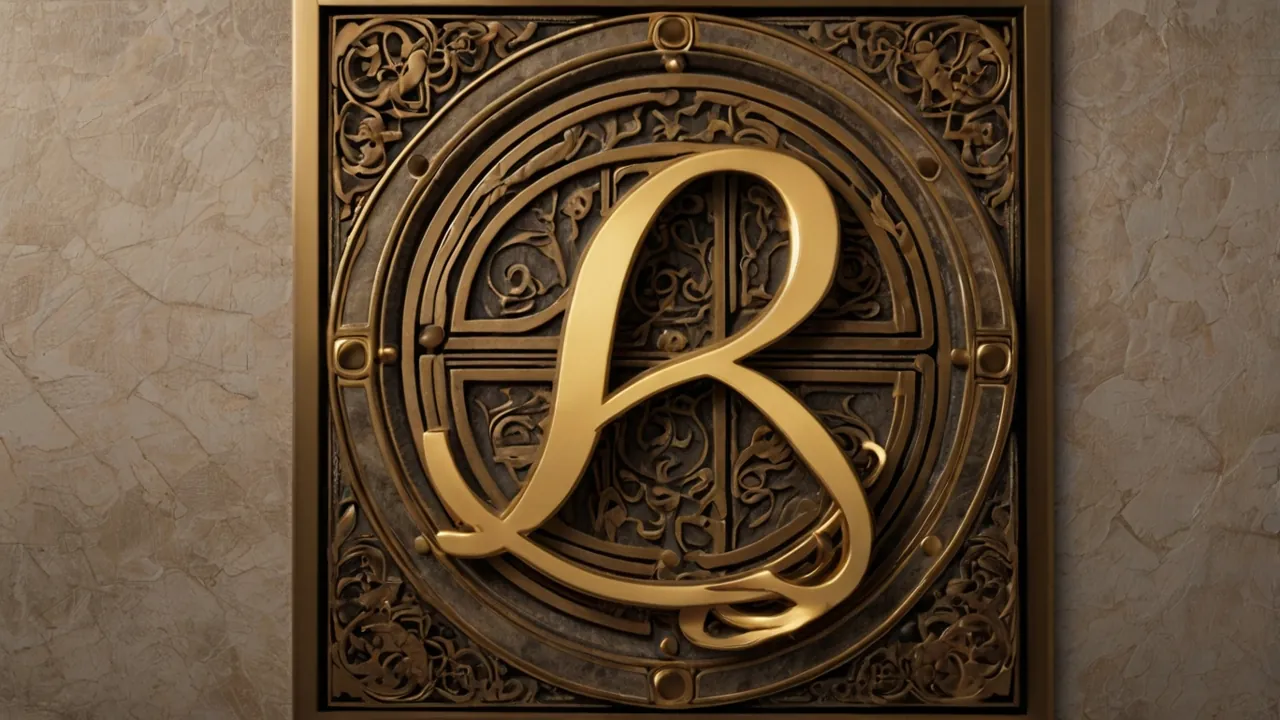The letter R resonates through human communication with remarkable resilience. From ancient rock carvings to rapid digital exchanges, this riveting character has remained relevant across centuries. Its rich history shows us how what started as a basic mark somehow turned into one of the most easily spotted letters in our alphabet. I’ve always been fascinated by how these symbols evolved! Come along as we take a journey through R’s story and see how it’s completely changed language, culture, and pretty much everything else.
The Radiant Journey of R: From Ancient Scripts to Modern Alphabets
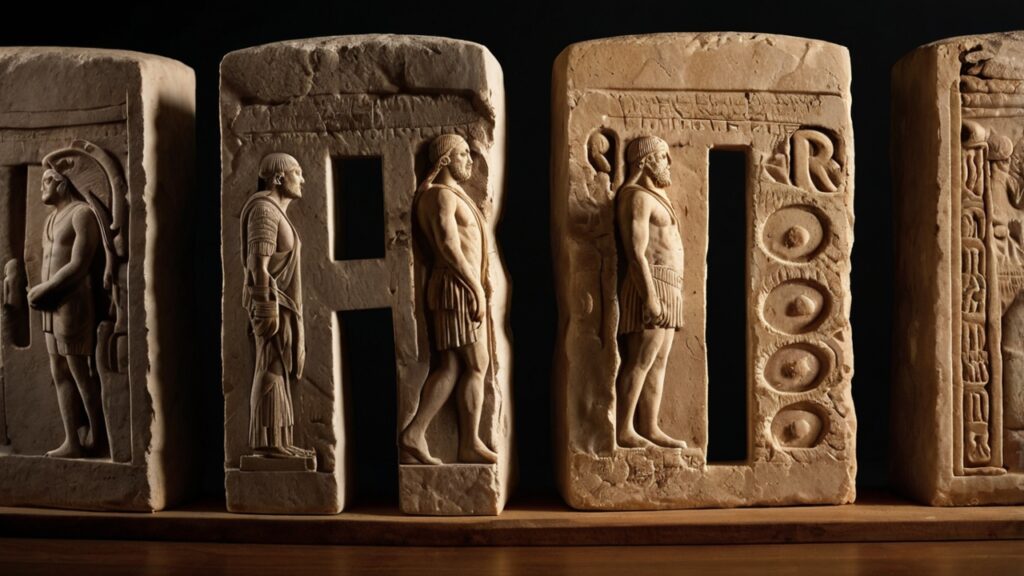
(AI Generated)
You know, letter R has quite the backstory. It all kicked off in those ancient, dusty Middle Eastern landscapes thousands of years ago. The funny thing is, it wasn’t even known as “R” back then! The Phoenicians had this symbol, which they called “resh,” meaning “head” in their language, and they just drew it as a simple little head profile. If you saw it today, you’d barely connect it to our modern letter. It took ages to develop into what we recognize now, with different civilizations each putting their spin on it.
Then the Greeks got hold of the Phoenician alphabet and made some changes. They flipped the symbol around and started calling it “rho.” Later on, those practical Romans tinkered with it some more and added that little leg sticking out – you know, the part that makes our modern R actually look like an R! This whole process took centuries, though. It wasn’t some overnight makeover.
Each culture contributed small but significant changes. The letter R represents one of language’s most remarkable examples of evolutionary design. Despite thousands of years of writing, its basic function remains relatively unchanged. Various writing systems, from cuneiform to hieroglyphics, all needed to represent similar sounds.
R in the Realm of Sounds: Phonetics and Pronunciation
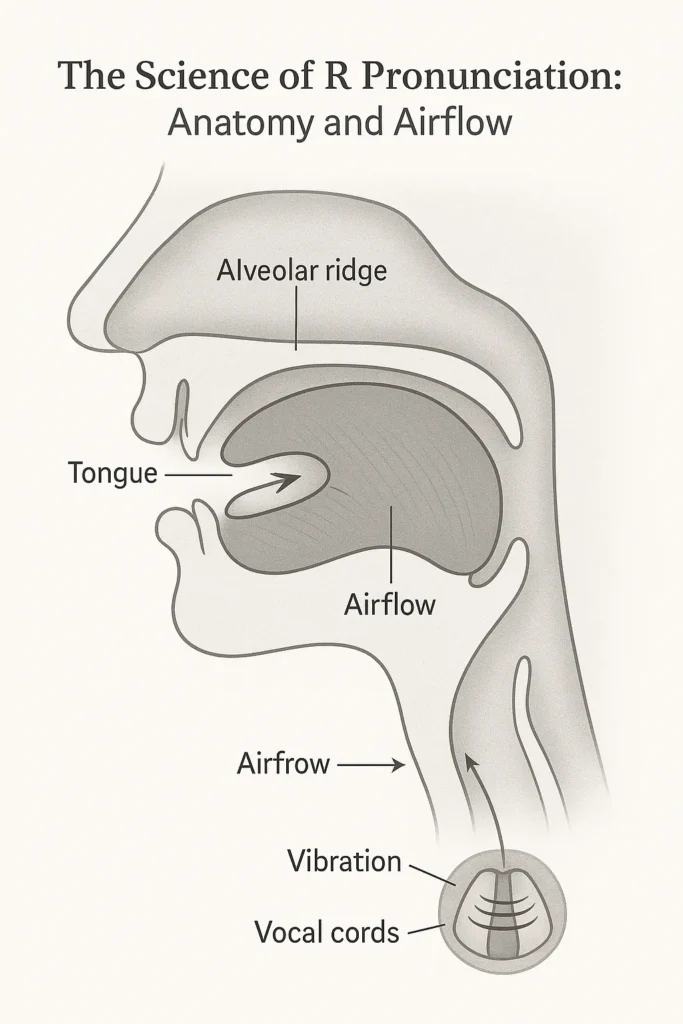
(AI Generated)
When it comes to pronouncing R, it’s crazy how different it sounds depending on where you’re from! Those of us who speak English are used to our softer “r” – nothing too fancy. But man, once you start traveling around and hearing other languages? That’s when it gets wild.
Take Spanish, for instance. My friend tried learning it last year and got completely stuck on that rolled “r” – you know, the one where your tongue has to do that quick trill thing? She’d practice in the car during her commute, and by the time she got home, she’d be frustrated. Most of us English speakers find it super tough to get right.
Then there’s French. I remember my high school French teacher trying to get us to make their “r” sound correctly. It comes from way back in your throat – kind of raspy and gurgly. Nothing like our English version! Scottish folks and Germans have their own throat “r” sounds too, but they’re slightly different from each other. And get this – in some Japanese dialects, their “r” is this weird mix between our “r” and “l” sounds.
I’ve seen so many people at language meetups struggling with these different “r” sounds. It’s like our mouths get programmed early on, and trying to make new sounds as adults is just plain hard. Your tongue literally doesn’t want to move that way!
The Symbolic Strength of Letter R in Literature and Art
When you look at books and stories, it’s kinda cool how writers often throw in lots of words with R when they want you to feel rumbling, roaring, or rushing. I noticed this the other day, reading an old favorite. Like in “Treasure Island” – Robert Louis Stevenson wasn’t just randomly naming his character “Long John Silver” or creating places like “Rum Cove.” He was using all those letter R sounds to make you feel like you’re there in that rough, salty pirate world.
My English teacher pointed this out years ago, and I’ve never read the same way since. It’s one of those little writer tricks that works on us without us even realizing it. Next time you’re reading something with lots of action or rough environments pay attention to how many R words pop up – it’s pretty surprising once you start noticing it!
Artists have incorporated the visual form of the letter R into their work as well. The curved and straight lines offer an interesting balance that works well in logos and monograms. Renaissance painters sometimes hid the letter R in their compositions as a signature or symbolic element.
When it comes to poetry, the letter R does something special with rhythm. Makes words flow in a way that sticks with you. I was reading Poe’s “The Raven” in college, and our professor made us say it out loud – “Once upon a midnight dreary, while I pondered, weak and weary.” Try saying that! All those Rs give it this creepy, haunting vibe that you can’t shake. I still remember how the classroom felt kinda eerie after we all read it together.
R’s Role in Branding and Marketing
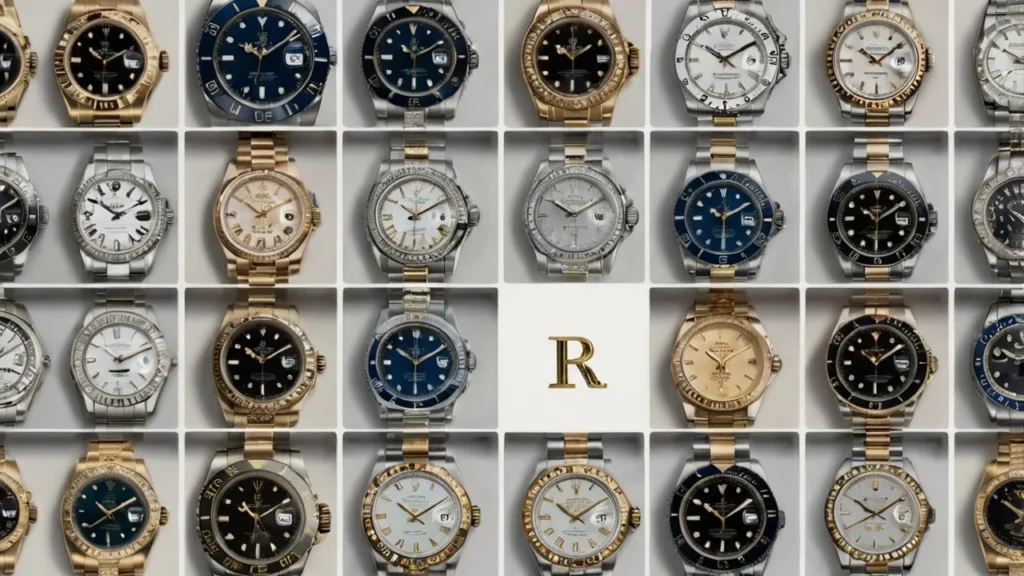
(AI Generated)
Ever notice how many fancy brands use R in their names? It’s not an accident! Rolex, Rolls-Royce, Ralph Lauren – they’re all playing the same game. My marketing buddy says it’s because letter R sounds kinda royal and refined. Makes you think of reliability too. Pretty smart if you ask me.
I stumbled across this indie record label called Letter Racer a while back – founded by those Ratking guys. They leaned into the whole letter R thing with their name and logo. Creates this edgy, fast-paced feeling that matches their music perfectly. Whenever I see that logo now, I know exactly who they are – sticks in your brain, you know?
And YouTube? Sure, their red play button doesn’t have an R, but the name itself uses the power of letter R without being obvious about it. It’s just “You” plus “Tube” (my dad still calls TVs “tubes” sometimes lol). But that letter R in “Tube” gives it this nice ring that makes it satisfying to say. Try saying it without the R sound – “You-Toob” – just doesn’t have the same punch, right?
The Psychological Impact of R on Names and Identity
Research suggests that names containing R often convey strength and dynamism. Robert, Richard, Rachel, and Rebecca all benefit from the robust quality that R lends to their sound. I read somewhere that people with R-names are seen as more energetic and active. Like Robert or Rachel – there’s this study that showed folks tend to picture them as more on-the-go types. Not sure if it’s true for everyone, but my friend Rebecca is the most high-energy person I know, so maybe there’s something to it?
It’s weird how much our names end up influencing who we become. I never really thought about it until my cousin changed her name and said she felt different afterward. Not completely different, but certain parts of her personality started showing up more. Makes you wonder how much our names are silently shaping us throughout our lives, even when we don’t realize it’s happening.
Parents selecting baby names often gravitate toward R-names without realizing the psychological associations. The satisfying resonance of these names makes them perennially popular choices across generations and cultures. This reflects our innate response to certain sounds.
R in Numerology and Mysticism
My aunt is super into numerology – she’s got all these books and charts about it. She told me once that R usually connects to either 9 or 18, depending on which system you’re following. Those numbers are supposed to vibrate with leadership energy and humanitarian vibes. She did my “name reading” at a family reunion and went on about how the Rs in my name were bringing in all this “completion energy” or something. I just nodded along, but it’s kind of interesting how these ancient systems link specific letters to certain qualities. Not sure I buy into it completely, but some of what she said about my personality was weirdly accurate.
Signs containing letter R often appear in mystical texts and ancient religious writings. Some traditions hold that the sound of R creates vibrations that resonate with specific spiritual energies. Chanting practices sometimes emphasize these sounds to achieve particular meditative states.
The mystery surrounding letter R extends to occult traditions where certain letters hold special significance. In some magical systems, R represents rebirth or renewal, making it a powerful symbol in transformation rituals. This connection to cycles of change appears across diverse mystical traditions.
The Evolution of Letter R in Typography and Design
Typography reveals R’s remarkable versatility. In serif fonts, the leg and shoulder of R create distinctive features that typographers can emphasize or minimize. Sans-serif versions demonstrate how the letter remains recognizable even when stripped to essential elements.
Medieval manuscripts show elaborately decorated letter R characters, often beginning important sections of text. These illuminated letters transformed the functional symbol into artistic masterpieces. Modern designers continue this tradition by experimenting with R’s form while maintaining its legibility.
Digital typography has opened new realms for R’s design evolution. Variable fonts allow the letter to shift between weights and styles dynamically, creating previously impossible effects. Despite technological advances, good R design still requires balancing tradition with innovation.
R in Technology and Computing
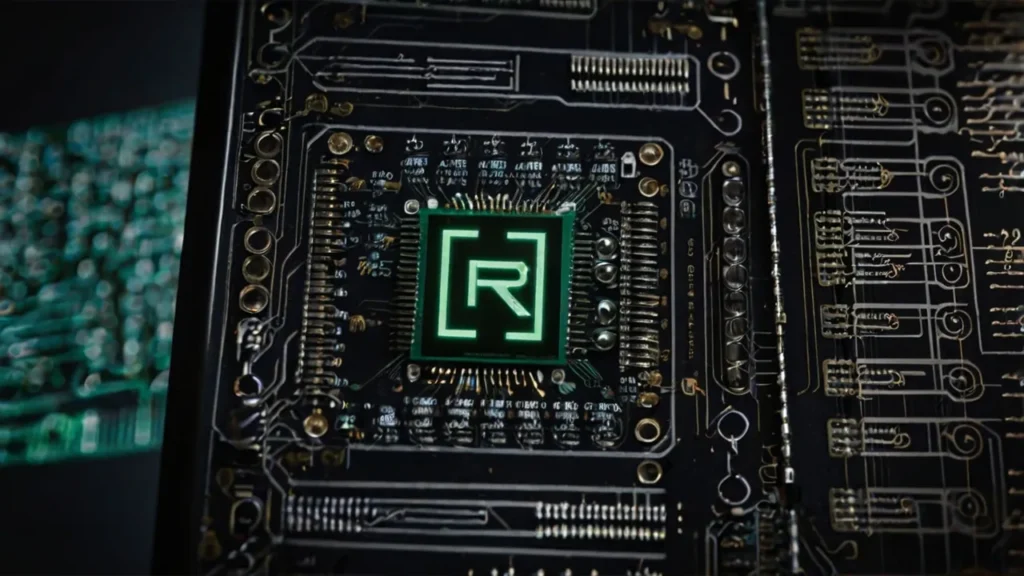
(AI Generated)
So there’s this programming language just straight-up called “R” that’s super important in tech these days. My buddy switched careers to data science last year and had to learn it from scratch. It’s basically designed specifically for crunching numbers and making those fancy charts and graphs you see in research papers. Funny enough, it got its name because it evolved from this older language called “S” – guess they just went with the next letter!
I’ve watched him use letter R to tear through these massive datasets that would take forever to analyze by hand. He’s always showing me these cool visualizations he’s made. The language just keeps getting more popular as everyone’s obsessed with data now. Plus, it’s open-source, so there’s this whole community of people building cool stuff and sharing it for free.
R shows up all over the place in other technical stuff too. If you’ve ever looked at an electronics diagram, those little “R” symbols mark where resistors go. And in math class, that fancy letter R with the double line (ℝ) stands for all real numbers. The letter’s like a technical Swiss Army knife!
The Cultural Footprint of R in Music and Pop Culture
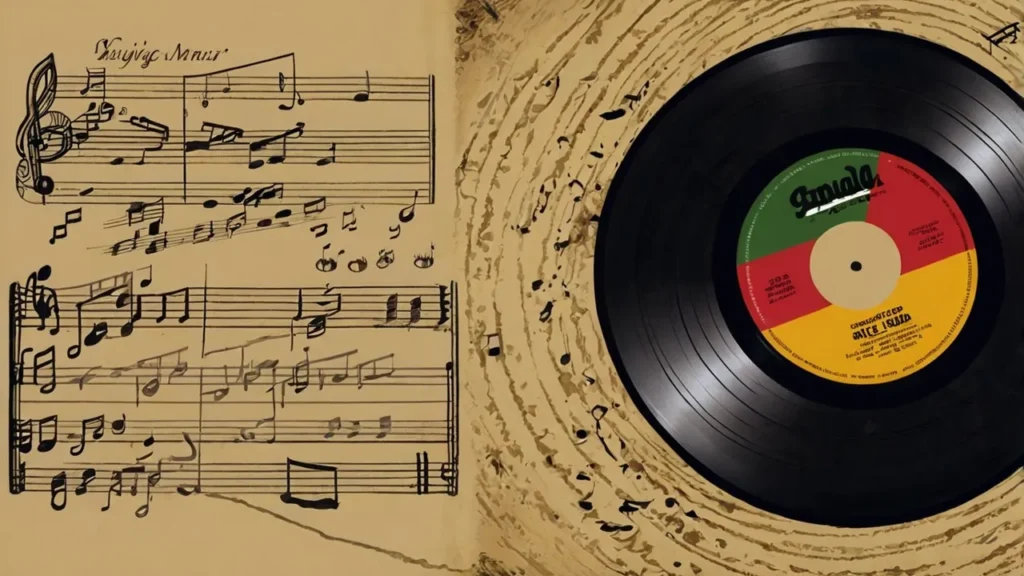
(AI Generated)
Ever notice how many music genres have letter R in their names? Rock, rap, reggae… can’t be a coincidence, right? These styles all have this rhythmic, powerful sound that the letter R kind of naturally suggests. I was making a playlist the other day and realized how many band names and album titles throw in Rs to sound more impactful.
Record labels know what they’re doing with those R-heavy artist names. Think about R.E.M. or R. Kelly – those Rs make their names stick in your head. And “R&B” has become way more than just a music category label – it’s a whole cultural thing now that means way more than just “Rhythm and Blues.”
Movies and TV do this too. All those characters with R-names usually end up being the tough ones – Rocky, Rambo, and Rey from Star Wars. They’re all fighters with this inner strength. My film professor would say that’s deliberate character naming to signal resilience. These naming choices reinforce character traits while creating recognizable, marketable identities.
R’s Presence in Scientific Terminology
Scientists rely on R to represent numerous important constants and variables. In physics, letter R denotes the gas constant, a fundamental value in thermodynamics. This universal constant appears in equations describing the behavior of gases under changing conditions.
Chemistry uses letter R to represent organic groups in molecular formulas. This shorthand allows chemists to discuss complex molecules more efficiently. The symbol R also appears in descriptions of chemical reactions and structural formulas.
Research papers frequently use letter r to denote correlation coefficients in statistics. This measure of the relationship between variables forms the foundation of countless scientific studies. The lowercase r’s appearance in research across disciplines highlights its importance in quantitative analysis.
The Role of R in Linguistic Patterns and Alliteration
Try saying “Round the rugged rocks the ragged rascal ran” five times fast! My drama teacher made us practice this as a warm-up exercise, and half the class was tripping over their tongues. It’s a perfect example of how packing in those R sounds creates this playful, twisty effect that’s both fun and challenging to say.
I never paid much attention to how poets use specific letters until my literature class last semester. When we were studying Robert Frost, our professor pointed out how he strategically placed R sounds throughout his poems. Go back and read “The Road Not Taken” or “Stopping by Woods” – all those Rs help create this rhythmic pattern that somehow makes you feel more connected to the countryside and nature he’s describing. It’s subtle but effective.
Politicians and their speechwriters know this trick too. My roommate’s a poli-sci major and always points out how many famous speeches use words starting with R at the beginning of consecutive sentences or phrases. It’s that anaphora technique – “Rights, responsibility, respect” and patterns like that. Creates this powerful, emotional build-up that gets crowds fired up. Next time you watch a major political speech, listen for it – you’ll start noticing it everywhere!
R in Global Scripts: A Comparative Analysis
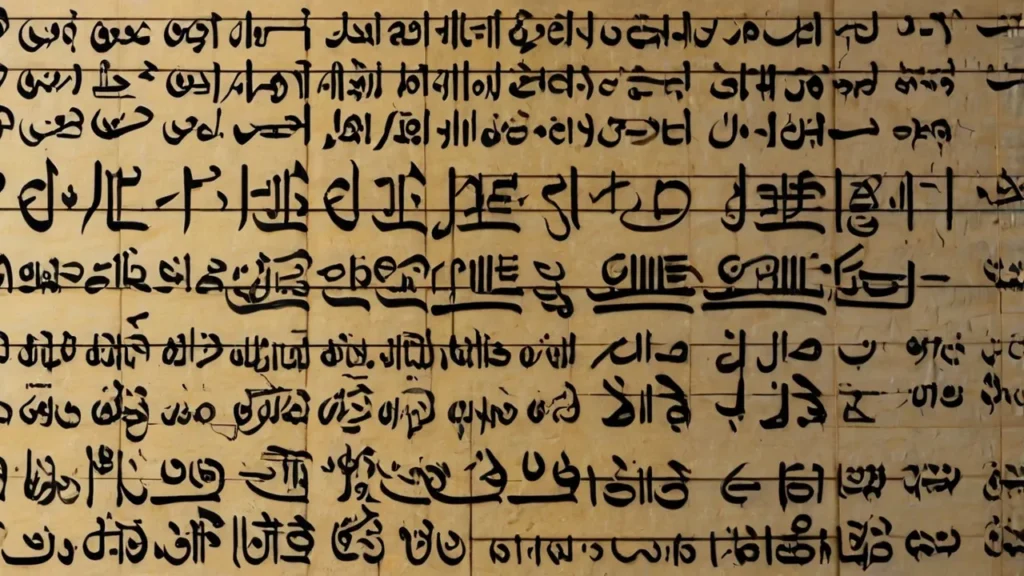
(AI Generated)
My Russian friend always laughs at my pronunciation when I try to speak her language. The letter that makes the R sound looks exactly like our letter P (it’s “Р” in Cyrillic), which confused the heck out of me when I first saw Russian writing. She says Russians roll that R much harder than we do in English – it’s got this strong trill that I just can’t seem to nail no matter how much I practice.
It’s fascinating how different writing systems handle basically the same sound. My college roommate was taking Arabic, and he showed me how they write the R sound as “ر” (RA). Looks nothing like our R! And when I visited Israel last year, I noticed their Hebrew letter for R is “ר” (resh). Each culture just developed its own unique way of capturing that sound on paper.
Japanese is the one that really trips me up, though. My sister’s been learning it, and she explained that their character “ら” (ra) makes this sound that’s somewhere between our R and L. That’s why you’ll sometimes see Japanese words romanized differently – like how “ramen” is sometimes written as “lamen.” When I try to pronounce it correctly, I feel like my tongue is caught between two different positions. Makes you realize how our ears are trained from childhood to hear language in specific ways.
Reading texts across multiple writing systems reveals fascinating patterns in how different cultures approach similar sounds. Despite visual differences, the basic concept of the R-sound maintains remarkable consistency across language barriers. This demonstrates the universal human capacity for similar vocalization patterns.
The Influence of R in Political and Social Movements
I was in this political science seminar last semester where we analyzed language in social movements, and it suddenly hit me how many revolutionary groups rally around words with R in them. Revolution, Rights, Resistance – all these powerful R-words! My professor pointed out that it’s not just a coincidence – there’s something about that forceful R sound that gives these terms extra punch when shouted in a crowd.
You see it in political slogans everywhere once you start looking. My grandpa has this vintage poster from an old campaign with the slogan “Restore, Rebuild, Renew” – three R-words in a row! It sticks in your head.
It’s kind of wild how both Republican and revolutionary groups – different ends of the spectrum – lean on the power of R-words. When we covered the French Revolution, I remembered how even in French, their famous motto “Liberté, Égalité, Fraternité” uses those rolling R sounds to emphasize the revolutionary spirit. You can practically hear the passion when it’s spoken properly.
And it hasn’t changed much today. I went to a rally last month where people were chanting for “racial justice” and “reproductive rights” – modern movements still tapping into that same linguistic power. Something about those R sounds just feels more urgent and important when you’re trying to change the world.
Educational Approaches to Teaching the Letter R
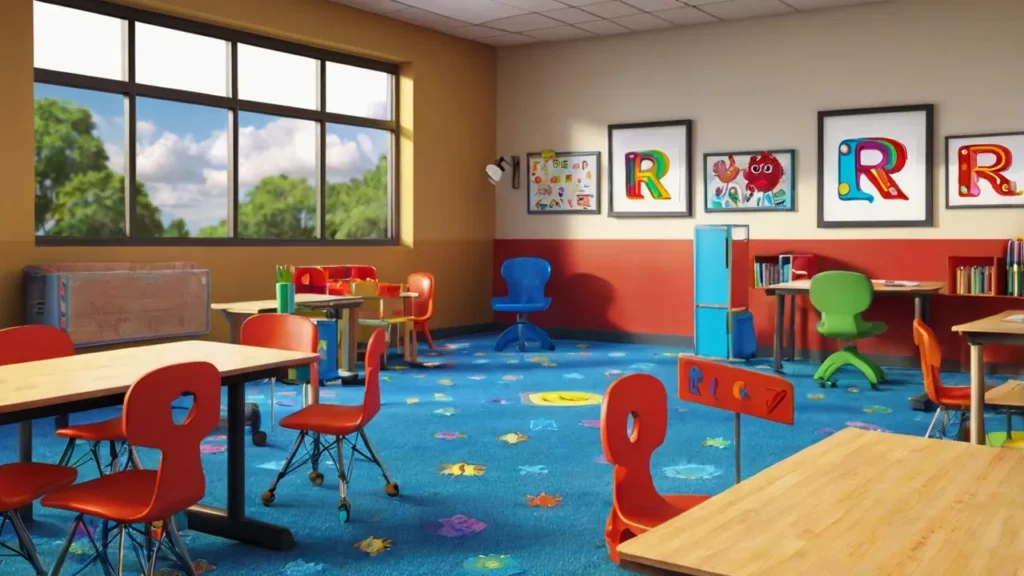
(AI Generated)
Reading instruction typically introduces R relatively early in the alphabet learning process. However, my nephew spent like two whole years in speech therapy, mostly just working on his R sounds. It’s one of the toughest letters for kids to master! His therapist told my sister that R is usually the last sound children figure out, and some kids don’t get it right until they’re 6 or 7 years old.
They had all these special exercises where he’d practice saying words like “rabbit” and “car” over and over. The therapist would show him exactly where to place his tongue – apparently, there are like three different ways to make an R sound correctly, and they had to figure out which one worked best for him. They used mirrors, tongue depressors, and even these little vibrating tools to help him feel the right mouth position.
What really surprised me was how common R problems are. At my nephew’s elementary school, the speech therapist has this “R club” where a bunch of kids get together twice a week just to practice their Rs. Kind of makes you appreciate how much work goes into something most of us take completely for granted!
R in Idioms and Expressions
These sayings have stuck around for ages – my grandma uses the same R-filled expressions that I catch myself using with friends. Just shows how deeply this letter has worked its way into how we talk.
When my exchange student friend was learning English, idioms with R were the ones that confused her the most. Try explaining “raining cats and dogs” to someone who’s never heard it! She’d translate it literally in her head and give me this completely bewildered look. Or “running on empty” – makes perfect sense to us because we have the cultural background, but she’d be like “running on what now?” These R expressions are packed with vivid mental pictures that just don’t translate well.
I’ve noticed how naturally phrases like “rise and shine” and “rest assured” flow when you say them. Something about those R sounds makes them satisfying to pronounce. My first corporate job taught me how business people love their R phrases – everything was about “return on investment” and “risk assessment.” My boss would throw these terms around in every meeting like they were going out of style. Guess those strong R sounds make you sound more professional or something.
The Aesthetic Appeal of R in Calligraphy
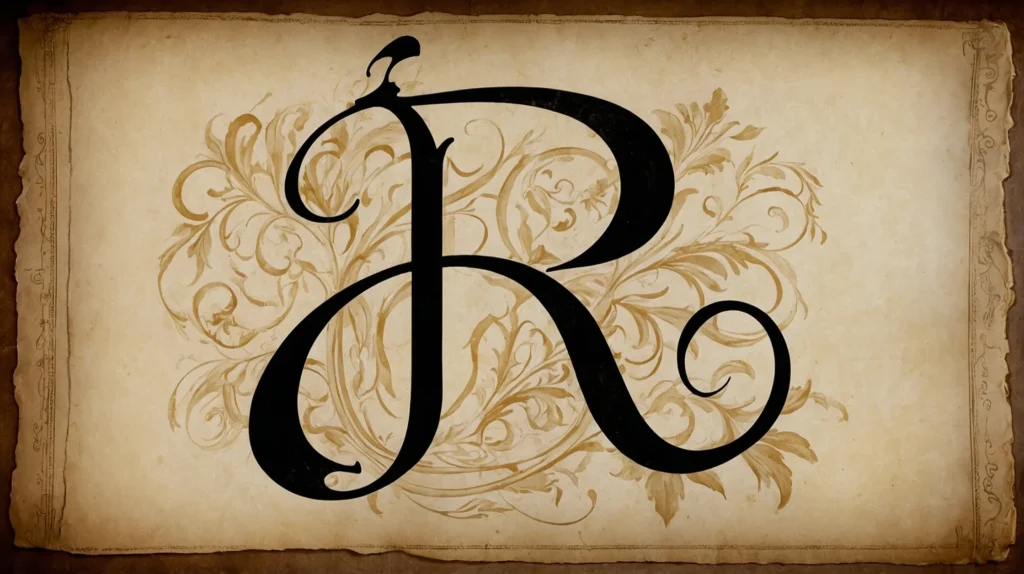
(AI Generated)
Renaissance calligraphers reveled in R’s expressive potential. Its combination of straight lines and curves offered opportunities for artistic flourishes. Historical manuscripts show R with elaborate swashes extending from its leg or shoulder.
Renowned modern calligraphers continue to explore R’s artistic possibilities. The letter presents unique challenges and rewards for hand-lettering artists. Its balanced form provides a foundation for creative interpretation while maintaining recognizability.
Refined calligraphy styles like Copperplate and Spencerian give R a particularly elegant treatment. The flowing lines of these scripts transform the letter into a graceful form that maintains its strength. Digital calligraphy tools have expanded these possibilities further, allowing unprecedented experimentation.
R’s Representation in Digital Communication
Recent developments in digital communication have given R new roles. In internet shorthand, “R” commonly substitutes for “are” in casual messages. This repurposing shows how the letter continues to evolve in response to changing communication needs.
Retailers and brands capitalize on R’s digital presence through registered trademark symbols (®). This small but significant mark carries legal weight in protecting brand identities. The proliferation of these symbols reflects our increasingly brand-conscious digital landscape.
Reddit, one of the internet’s most popular platforms, prominently features R in its name and logo. The site’s communities (subreddits) all begin with “r/”, creating a consistent naming convention that has become instantly recognizable to millions of users worldwide.
The Letter R in Children’s Literature and Learning
Reading specialists note that children’s books often use R-rich vocabulary to develop phonological awareness. Dr. Seuss masterfully incorporated R-sounds in books like “Fox in Socks” and “Hop on Pop.” These playful texts help young readers practice challenging sounds while enjoying the story.
Recognizable characters like Red Riding Hood introduce children to R in memorable contexts. Early reading materials strategically present R in various positions within words to build comprehensive phonics skills. Picture books often pair R-words with related images to reinforce connections.
Recent research indicates that children develop R pronunciation at different rates. Rather than forcing standardized timelines, modern approaches recognize individual development patterns. Resources for parents and educators now emphasize supportive rather than prescriptive teaching methods.
Future Perspectives: The Evolution of R in Emerging Languages
Researchers studying language evolution predict R will maintain its importance in emerging communication systems. As constructed languages for international communication develop, R typically remains a core element due to its widespread use across existing languages.
Rapidly evolving digital communication continues to transform how we use letters. R has already adapted to text messaging and social media contexts. Future developments may see further specialization of R’s functions in specific technical or cultural domains.
Rising interest in preserving endangered languages has highlighted diverse R-sounds across cultures. Documentation efforts capture these variations before they disappear. This preservation work ensures future generations will understand the full range of R’s pronunciation and usage throughout the human language.
Words That Begin With Letter R
R rumbles and resonates — a rolling rhythm that brings voice and vibration to language. These words reflect its resonance:
- Remote work – Working outside traditional office spaces, often online. Work from anywhere
- Rhythm – The patterned flow that moves music, speech, and time. Understanding rhythm
- Resonance – When something strikes a deep chord within. Resonance in physics and metaphor
Continue Your Alphabet Journey
Explore More Letters:
A | B | C | D | E | F | G | H | I | J | K | L | M | N | O | P | Q | R | S | T | U | V | W | X | Y | Z
Share this article:
Did you enjoy learning about the letter R? Share your thoughts in the comments below or spread the knowledge by sharing this article with fellow language enthusiasts
